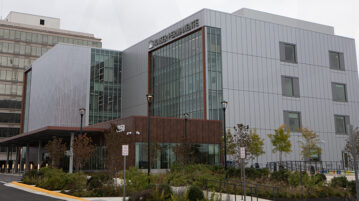By Permanente Medical Staff
Are you one of the 29 million Americans with diabetes? If so, you probably know how important it is to control your blood sugar.
One big risk that comes with prolonged high blood sugar is diabetic neuropathy, which can damage your nerve fibers. People who develop the most dangerous kind of neuropathy, sensory neuropathy, experience decreased sensation or even a total absence of any kind of sensation in their feet. This can prevent you from feeling pain associated with things like stepping on a nail or developing an ulcer. If left unaddressed, these wounds can worsen and eventually land you in the hospital.
Considering that 60 to 70 percent of people with diabetes eventually develop some form of neuropathy, it’s important to seek medical help in the early stages of the condition. Should you experience any of its symptoms, such as tingling, burning, or numbness in the feet or legs, contact your primary care physician. Good glycemic control can help keep neuropathy at bay – and prevent it from worsening if you’re already showing signs of it.
If you’ve been diagnosed with neuropathy, you’ll likely need at least a yearly checkup with your doctor or a few annual visits with a podiatrist.
Managing Your Diabetic Neuropathy
Usually by the time numbness sets in, it’s unlikely that your neuropathy will get better or improve. But you can manage it with proper medications and self-care. Your doctor will take care of the first part, and it’s up to you to do the second. A vital part of self-care is a daily inspection. Make sure to check your feet each day for any signs of redness, drainage, or blisters. Use a mirror or even a smartphone on selfie mode to look at hard-to-see parts of your feet, or ask a friend or family member to help.
What should you do if you find something concerning? Start by calling your physician. At MAPMG, patients with problems caused by diabetic neuropathy may now be referred to a new service: the Complex Foot Wound Clinic, which has locations at the Largo and Kensington MAPMG sites. The clinic provides focused care to patients with diabetes who are at highest risk for developing lower extremity complications, including foot ulceration, infection, and amputation. The goals of the clinic’s team are to prevent major amputations, keep patients out of the hospital and emergency room by catching foot wounds earlier, and initiate treatment immediately.
“In the Complex Foot Wound Clinic, we work with skilled nurses and staff who have experience with complex wound dressings, bioengineered skin and tissue substitutes, and total contact casting, which is the gold standard for offloading foot wounds,” says Adam Isaac, DPM. He presented on how an integrated clinic, like MAPMG’s, could reduce the risk of amputation in high-risk diabetic patients at the American Podiatric Medical Association’s Annual Scientific Meeting in 2016.
His findings are in conjunction with research he conducts with the MAPMG Innovation Engine and Mid-Atlantic Permanente Research Institute (MAPRI) investigating wireless, remote temperature monitoring technology to reduce foot ulcer recurrence. As part of Kaiser Permanente’s integrated and data-driven health system, MAPRI’s scientists research and refine treatments and techniques to better help today’s patients recover and manage their health in the future.
Dr. Isaac says that since the Complex Foot Wound Clinic started about two and a half years ago, hospital readmission rates have dropped. But he notes that there is much more work to be done.
Treatment for Foot Wounds
At MAPMG’s Complex Foot Wound Clinic, a provider will take your history, review any available labs and imaging, assess your circulation and sensation, and inspect your feet for signs of an open sore or infection. If you do have a wound, the doctor will examine its appearance, including size, depth, and any characteristics that may indicate a deeper underlying infection.
In terms of treatment, your doctor will likely start with debridement – which involves removing any debris in a wound that may be impeding healing – then apply various wound care dressings and come with up a strategy for next steps.
“A big part of healing these kinds of wounds is taking pressure off of them,” says Dr. Isaac. “This can be tricky to do on your own if you can’t feel the wound.” The Complex Foot Wound Clinic has special offloading devices and casts you can wear that can help do the work for you.
Beyond that, you’ll work with a clinic health provider to develop a plan, which can involve regular follow-up on a weekly or monthly basis. This could also mean some sort of surgical intervention to further clean the wound or add a skin graft. You might also need to undergo surgical reconstruction on your foot.
Referrals may be made depending on whether you need vascular surgery, which can help improve blood flow, or to see an infectious diseases specialist, who can tailor an antibiotic regimen for you.
The good news is that by taking steps early to identify and address foot wounds, and by tapping into the latest clinical advances like those offered by MAPMG’s Complex Foot Wound Clinic, patients today can expect better outcomes than ever before.
Read more about neuropathy, including symptoms, prevention, and treatments, on MAPMG’s Staying Healthy pages.
This was republished from the MAPMG On Health blog.




